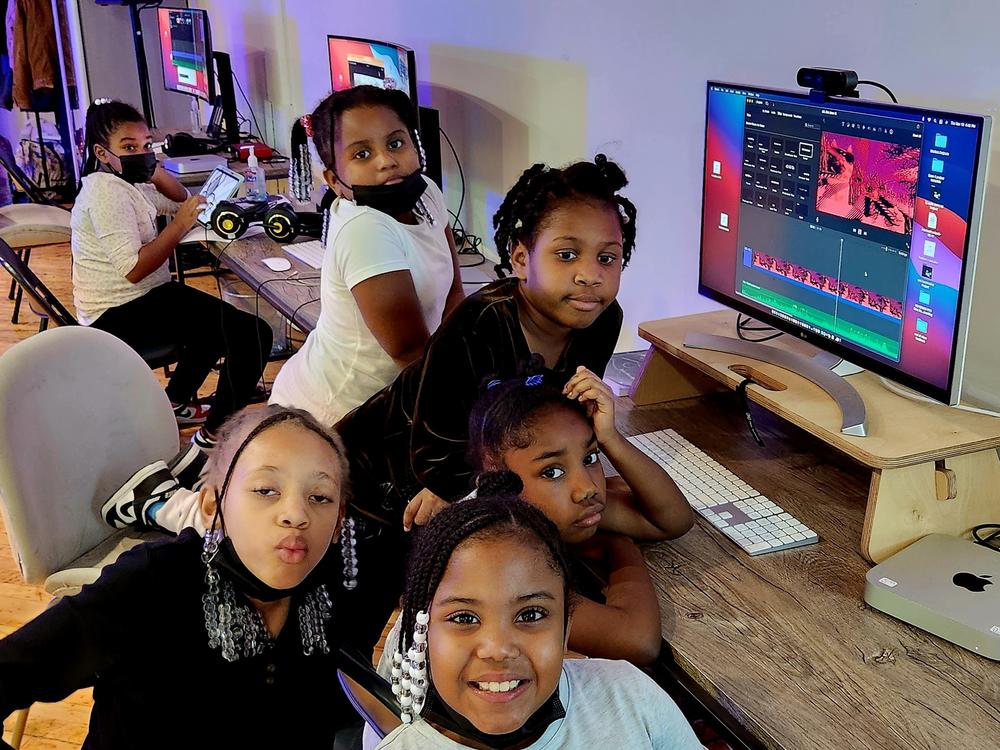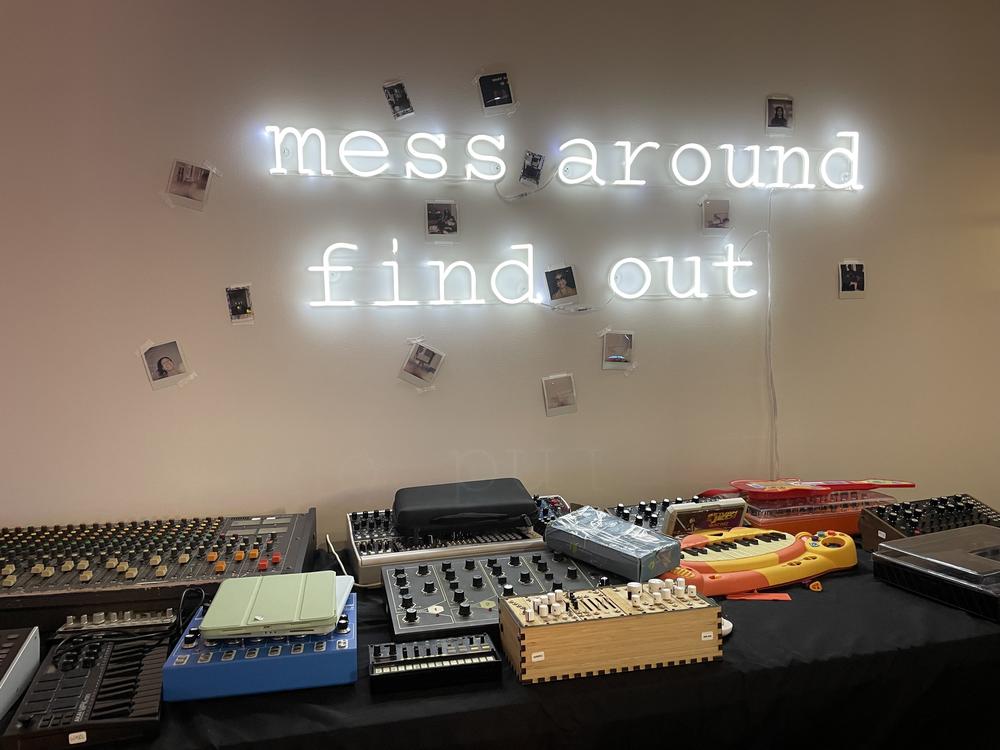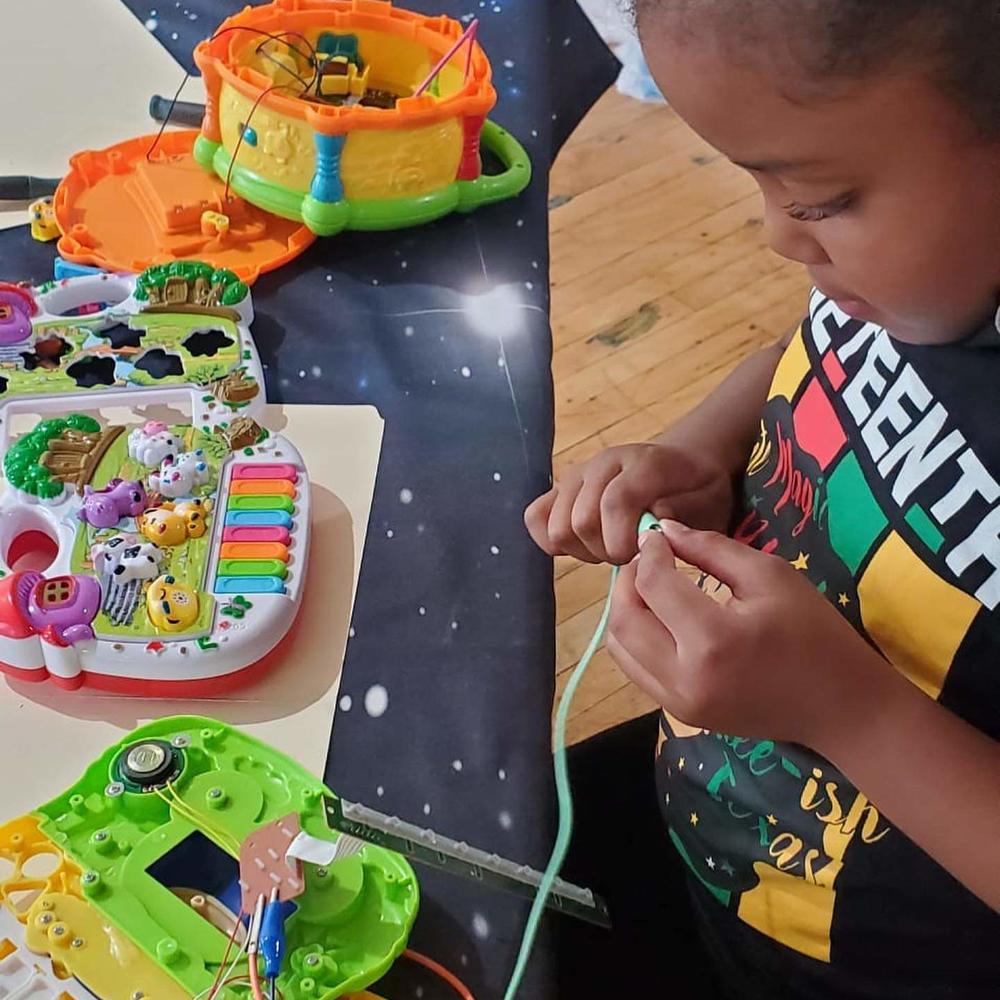Section Branding
Header Content
Willie Mae Thornton was a foremother of rock. These kids carry her legacy forward
Primary Content
In 2000, a student project in Portland, Oregon led to the formation of rock camps around the world, providing mentoring opportunities for girls to learn all aspects of writing and performing music. Founded in 2004, Willie Mae Rock Camp in Brooklyn was one of the first.
Executive Director LaFrae Sci, who has been with Willie Mae from the start, says instruction begins with the sounds in kids' everyday lives. "Their Abuela turning on the oven in the morning to make tortillas, or the sound of their father's keys in their pocket when he gets up to go to work... we bring that into music and we also teach them to listen to their voice within that helps them to develop the voice they use outside in the world."
Kids here as young as 5 years old learn how to bang on the drums and shred on guitars, but also work with electronic instruments and music technology, like the synths, samples, and coding app that 10-year-old Oonagh Wickens used to create a multimedia piece she calls "Kuro Neko." "My sounds and my project- they're synth sounds," she explains. "And when I couldn't find the right one, or when I couldn't get something I liked, there were tons of people here to support and help me."
STEM concepts, which illuminate how musical instruments and technology make far-out sounds, are integrated across Willie Mae's programming. "Everything is applied" explains Izzy Greene, who is one of the mentors.
In addition to its home base, Willie Mae operates in more than a dozen New York City schools and community-based partnerships. Unlike tuition-based music programs or those offered on a need-based sliding scale, Willie Mae's year-round instruction is offered to girls and gender-expansive youth at no cost. The majority of students identify as BIPOC, as do the instructors.
In blazing new creative trails, they're following in the footsteps of the real-life Willie Mae, says cultural anthropologist Maureen Mahon. "Willie Mae Thornton was born in Alabama, and at a very young age she went out on the road as a blues singer. She was 14 years old and she really never looked back."
Along with Sister Rosetta Tharpe and LaVern Baker, Mahon says that Thornton was one of the foremothers of rock 'n' roll. "When rock 'n' roll was invented a few years after she got her first recording deal, she didn't affiliate herself with that form. She thought rock 'n' roll was just the blues speeded up, but what's interesting is that the rock 'n' rollers thought she was interesting. She laid a template for a sound and an attitude."
Thornton recorded "Hound Dog" in 1952, four years before Elvis, and she wrote "Ball 'n' Chain," which became a big hit for Janis Joplin in 1968. Mahon says Thornton carried the torch of the blues while refusing to dim her light. "She was a person who was just her own self, unapologetically so. The idea of self-expression is so crucial."
That remained true as new musical styles emerged. Nona Hendryx was in her teens when she embarked on her recording career in the early 1960s, but she says her first love was science. "My older brother was a 'homemade' mechanic, and I would watch him investigating things, looking into things, looking underneath things, taking things apart and seeing what's inside."
When her band The Bluebelles morphed into Labelle in the 70s, Hendryx grew curious about how her musical ideas could be translated into sound- the art and science of recording." A woman named Roberta Grace- who was the only woman engineer that I had come across- she began to show me how to work with the electronics that were underneath the board, how they were soldered together, how you would put together a mixing board."
As a solo artist and producer, Hendryx has continued exploring how technology can be used to communicate and connect with audiences. She says access to tools and mentorship is critical. "If a young woman is taught to fish, she will fish for herself. She won't wait for somebody to bring her fish."
According to the USC Annenberg Inclusion Initiative, women are underrepresented as artists and songwriters and make up less than 3% of credited music producers. For women of color that number is even lower. Hendryx says that's why Willie Mae is so important. "Seeing these young girls taking toys apart and using the circuits within them to learn circuit bending, to graduate to where you're dealing with frequencies and generating sound, turning that into rhythm, turning that into melodies, turning that into a beat, turning that into a song."
Nine-year-old Kendal Ryant, who used a synthesizer to compose a song about the climate crisis called, "Earth Needs Help," says the best thing about Willie Mae is that she gets to experiment rather than simply follow a list of rules. "When I first started playing around with it, I kept messing around with turning it to, like, the different sounds."
Some of these kids may go on to careers as artists, producers, and engineers, others in science and tech. LaFrae Sci says the main goal is to support them as creators. "I've always really felt that music can bring us together, build community, heal, and empower. I call what I do being an imaginationist."
Copyright 2022 NPR. To see more, visit https://www.npr.org.
Bottom Content



